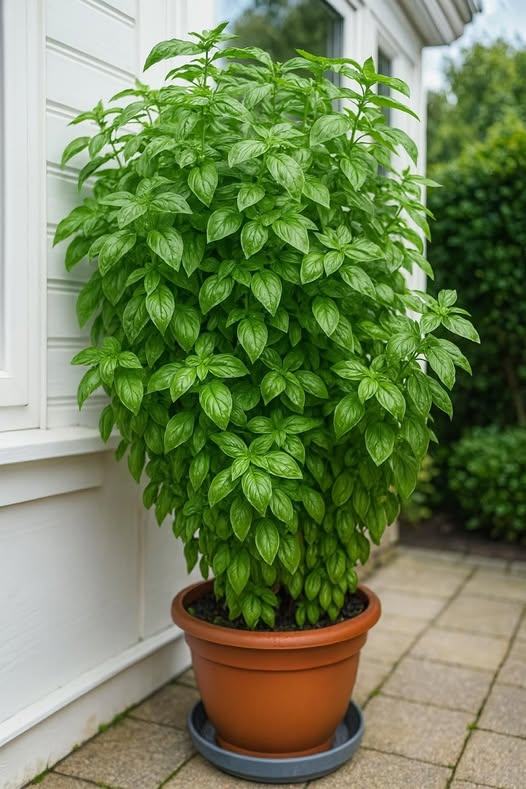Basil needs loose, nutrient-rich soil that drains well while retaining moisture. Regular garden soil is too heavy for container gardening.
Soil mix: Use a high-quality potting mix that contains peat moss or coco coir, perlite, and compost.
pH range: Basil prefers slightly acidic to neutral soil (pH 6.0–7.0).
Nutrients: Mix in organic compost or a balanced slow-release fertilizer to support early growth.
Avoid compacted or clay-based soils, which retain too much moisture and reduce root aeration.
Step 4: Plant Basil Properly
You can grow basil from seeds or starter transplants from a nursery. Both methods work well in containers.
From seed:
Fill the pot with moist potting mix.
Sow seeds ¼ inch deep, spacing them about 3 inches apart.
Lightly cover with soil and mist to keep moist.
Basil seeds germinate in 5–10 days when temperatures are between 70–85°F.
From transplant:
Gently remove the basil plant from its nursery pot.
Loosen roots and plant in the container at the same depth it was growing.
Firm the soil and water well after planting.
Always place the container in a sunny spot immediately after planting.
Step 5: Provide Full Sunlight
Basil loves heat and thrives in full sun. The more light it receives, the bushier and more productive it will become.
Sun requirements: Provide 6–8 hours of direct sunlight daily.
Indoors: Place pots near a south-facing window or use a grow light for 12–14 hours per day.
Outdoors: Place the container in a sunny, sheltered location protected from strong wind.
If your basil appears leggy or pale, it’s likely not getting enough light.
Step 6: Water Consistently and Correctly
Basil enjoys evenly moist soil, but overwatering is a common mistake that leads to root rot and fungal diseases.
Watering frequency: Water when the top inch of soil feels dry. This may be daily in hot weather.
Method: Water the base of the plant rather than the leaves to reduce disease risk.
Drainage check: Make sure water flows freely from the bottom of the pot. Empty saucers after watering to avoid soggy roots.
Inconsistent watering causes leaf curl, yellowing, and reduced growth, so develop a watering routine.
Step 7: Fertilize for Big Growth
To grow big, lush basil plants, regular feeding is essential. Over-fertilizing, however, can reduce flavor and make plants leggy.
Start with compost or organic matter mixed into the soil.
Use a balanced liquid fertilizer (10-10-10 or 5-10-5) every 2–4 weeks.
Alternatively, apply a slow-release organic fertilizer at planting and again mid-season.
For an organic approach, fish emulsion or diluted compost tea works well.
Avoid high-nitrogen fertilizers that encourage leafy growth at the expense of essential oils and flavor.
Step 8: Prune and Harvest Regularly
One of the most important steps in growing big basil is regular pruning. Basil grows bigger and bushier the more you cut it.
Begin harvesting when the plant has 6–8 true leaves.
Pinch off the top 1–2 inches just above a pair of leaf nodes.
Always harvest above a leaf node to encourage branching.
Remove flowers as soon as they appear to keep the plant focused on leaf production.
Frequent pruning not only improves flavor and yield but also extends the plant’s life by preventing it from going to seed.
Step 9: Monitor for Pests and Diseases
CONTINUE READING ON THE NEXT PAGE 🥰💕

